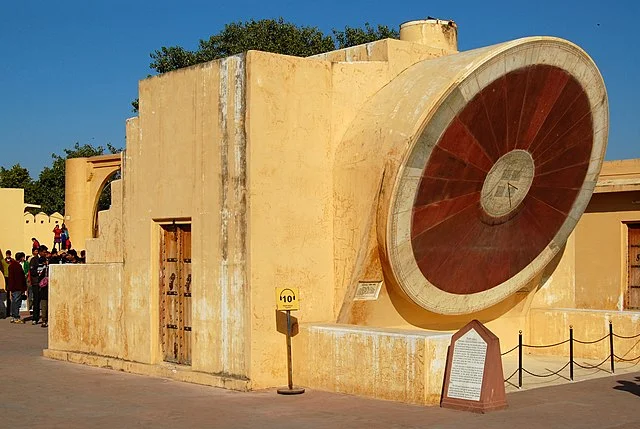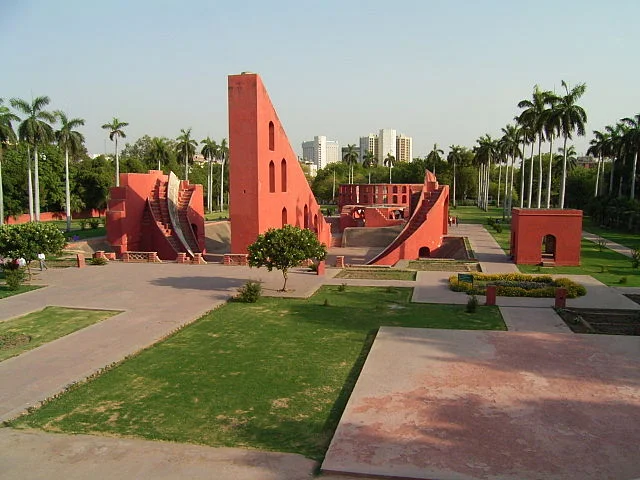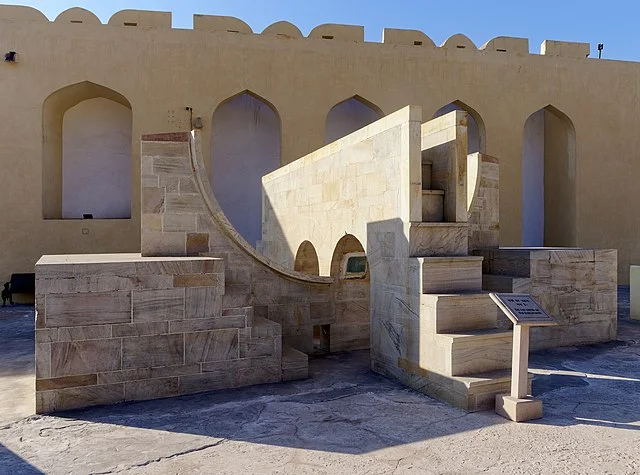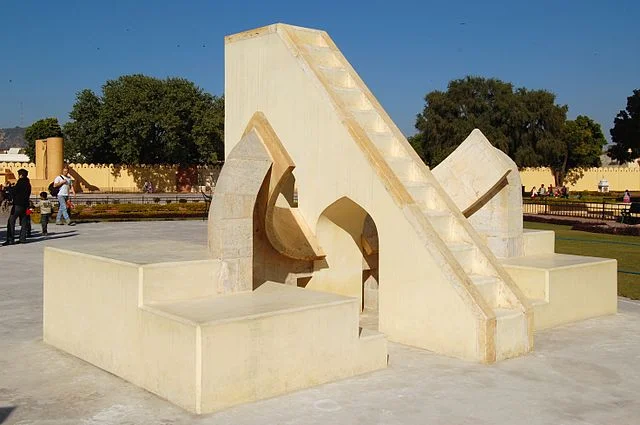Jantar Mantar is a collection of astronomical instruments built in India during the 18th century. These observatories are located in five cities: Delhi, Jaipur, Ujjain, Mathura, and Varanasi. Maharaja Jai Singh II of Jaipur, a Rajput ruler and scholar, commissioned the structures between 1724 and 1730 AD to improve the accuracy of astronomical observations.
Get your dose of History via Email
Purpose and Function

The primary purpose of Jantar Mantar was to measure time, predict eclipses, and track the positions of stars and planets. Jai Singh II believed that existing astronomical instruments were not precise enough. To solve this, he constructed larger and more accurate instruments, inspired by Islamic and European technology.
Jantar Mantar consists of large stone and metal structures, each serving a specific function. Instruments like the Samrat Yantra, a massive sundial, and the Rama Yantra, which measures the altitude of celestial objects, are prime examples.
Significance in Astronomy

Jantar Mantar played a critical role in advancing astronomy in India. The instruments allowed for more precise observations than ever before. Jai Singh II used these observations to improve the accuracy of calendars and astronomical predictions, which were vital for agriculture, religion, and navigation.
The design and scale of the instruments were revolutionary for their time. The observatories combined scientific precision with architectural beauty. For example, the Samrat Yantra in Jaipur, standing 88 feet tall, is one of the largest sundials in the world. It can measure time with an accuracy of up to two seconds.
Decline in Use

Jantar Mantar’s relevance declined in the late 18th and 19th centuries. Advancements in European telescopic technology made older methods of astronomical observation obsolete. However, the observatories remain historically and scientifically significant.
Preservation and Legacy

Today, Jantar Mantar is a UNESCO World Heritage Site. The Jaipur observatory was added to the list in 2010. Preservation efforts have been undertaken to protect these structures from environmental damage. Tourists and scholars alike visit the observatories to learn about India’s scientific and architectural heritage.
In conclusion, Jantar Mantar stands as a testament to India’s contributions to astronomy. Its innovative design, combined with its historical significance, makes it a valuable site for researchers and historians worldwide.
Source:

